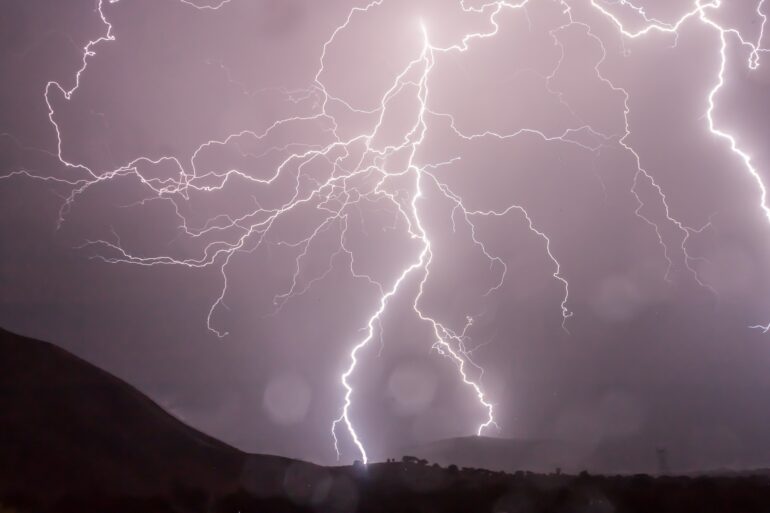TL;DR:
- Colorado State University researchers leverage AI to predict severe weather and unravel climate complexities.
- Machine learning aids in comprehending climate intricacies, predicting future weather, and assessing climate interventions.
- Transparent AI enhances trust, while collaboration shapes accurate storm forecasts.
- CSU’s AI-CLIMATE Institute pioneers climate-smart agriculture and forestry practices through AI techniques.
- AI’s impact extends to optimizing land use and guiding decision-making amid uncertainties.
Main AI News:
The intricate tapestry of climate dynamics, meteorological intricacies, and land utilization dilemmas has long confounded the human endeavor to comprehend and mitigate the looming specter of climate change. What if, however, the tools to not only foresee severe storms over extended horizons but also prognosticate the climatic landscape half a century ahead and formulate strategic interventions to assuage the brunt of climate upheavals were within our grasp? In an auspicious union, the corridors of Colorado State University (CSU) resound with the endeavors of researchers who, through harnessing the potent force of artificial intelligence (AI), are inching closer to realizing these visionary feats.
Dr. Elizabeth Barnes, a luminary in Atmospheric Science, has harnessed the might of machine learning, a subset of AI, to dissect and demystify the labyrinthine intricacies of climate science. Alongside, Professor Russ Schumacher, a preeminent Colorado state climatologist at the helm of the Colorado Climate Center, spearheaded the development of a machine learning paradigm that, with astounding precision, forecasts impending tempestuous weather events four to eight days in advance. This innovation, now seamlessly woven into the tapestry of daily operations at the National Weather Service, has fortified our ability to prepare for nature’s capricious onslaughts.
Simultaneously, the visionaries led by University Distinguished Professor Keith Paustian, ensconced in the annals of the Department of Soil and Crop Sciences, are orchestrating a symphony where CSU’s laureled mastery in greenhouse gas quantification converges harmoniously with the symphonic notes of machine learning. The resultant crescendo is poised to elevate the science to unparalleled echelons.
Machine learning emerges as an apotheosis for comprehending climate complexities, for it deftly gleans insights from data, plumbing the depths of the climate realm’s intricacies. As Dr. Barnes aptly elucidates, “We’re charting new territories, endeavoring to unfurl the enigma of predictions for human comprehension.” Delving further, she underscores the labyrinthine journey of unraveling the enigmatic processes, equating it to deciphering a labyrinth, retracing the steps from outcome to initiation.
However, the true pantheon of accomplishment beckons when AI’s rationale becomes transparent, when the ‘why’ behind its conclusions is illuminated. Dr. Barnes and her cohort of diligent minds unravel the intricacies of machine learning models, birthing models that whisper lucidity at every juncture. Their laborious odyssey, though daunting, unearths a treasure trove where predictive prowess marries with comprehensibility.
Beyond the scientific realm, the cradle of trust in AI lies in its transparency and interpretability. Dr. Barnes and fellow luminaries like Imme Ebert-Uphoff and Professor Chuck Anderson thread together a consortium to unravel the enigma of trustworthy AI, fostering faith in the delicate domain of weather and climate forecast. The National Science Foundation-funded Institute for Research on Trustworthy AI in Weather, Climate, and Coastal Oceanography coalesces their wisdom, catalyzing the future we dare to envision.
CSU’s meteorological tapestry interweaves the threads of machine learning, birthing a prophetic model. This model, a brainchild of Schumacher’s team, redefines predictive prowess, embellishing the National Weather Service’s Storm Prediction Center and Weather Prediction Center. Aptly christened CSU-MLP (Colorado State University-Machine Learning Probabilities), this model’s prescience in foreseeing excessive rainfall, hail, and tornadoes 4 to 8 days ahead is an epoch-making triumph.
Its narrative unfurls through a symphony of collaboration, spanning years of harmonious resonance between CSU’s atmospheric scientists and the heralds of the National Weather Service. Together, they have bequeathed a vanguard against hazardous weather, equipping communities with lead time to brace against the elements.
Allie Mazurek, a fervent acolyte of the CSU-MLP saga, orchestrates a symphony of transparency. Her endeavor is to orchestrate clarity amidst complexity, to fathom the pivotal atmospheric cues that underpin the model’s prophetic utterances.
Yet, in our march toward meteorological mastery, AI’s symphony is harmonized by human hands. Schumacher wisely lauds this symphony’s diverse harmony – AI for patterns, numerical models for physics, and humans for synthesis and communication. Together, they compose a holistic opus of comprehension.
CSU’s foray into AI extends its embrace to sustainable agriculture and sylvan landscapes. The AI-CLIMATE Institute, a consortium involving CSU, the University of Minnesota, and Cornell University, pledges allegiance to a greener, smarter tomorrow. Through deep learning’s embrace and guided by knowledge, this institute harmonizes climate and land dynamics, dancing in tandem with a symphony of carbon accounting and ecological harmony.
Principal Investigator Keith Paustian’s assembly of scholars steers the AI-CLIMATE ship, navigating toward a world where agricultural lands and verdant forests morph into bastions of carbon sequestration. Theirs is a quest that straddles the contours of optimization, where AI’s dexterity molds complex riddles into solutions.
The model they forge, a confluence of knowledge and learning, bequeaths a treasure trove of likelihoods, guiding our decisions amidst a tapestry of uncertainties. Thus, AI-CLIMATE’s opus is more than scientific – it’s a chorus that reverberates across ecosystems, birthing designs that whisper solutions to nature’s quandaries.
Conclusion:
The fusion of AI with climate science heralds a new era of predictive precision and understanding. AI’s transparent insights and predictive capabilities reshape storm forecasts, sustainable land use, and carbon management strategies. This convergence of technology and expertise presents burgeoning opportunities for businesses to innovate in climate-resilient solutions, ecological optimization, and sustainable resource management.

